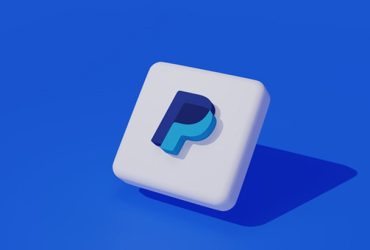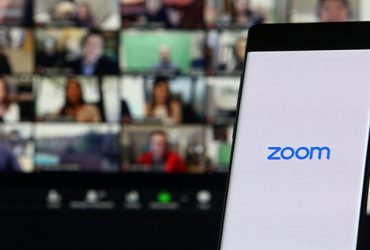App development will typically take between 6 and 12 months to complete. Because of this, it is important to have a plan in place to make the most of it. In order for an app to be successful, it must have:
• Well-designed UIs (user interfaces)
• Good user support
• Robust data protection
• Quick loading times
A good app will help to support business growth and allow you to gather valuable data from your users. Monetizing your app will also increase revenue.
App revenues of $543.5b are projected for 2023. These figures are made up of $306.7b in advertising, $231b in in-app purchases, and the remaining $5.8b from paid apps.
These figures are predicted to rise to over $755b by 2027, so it is important that app owners understand the best ways to monetize their assets.
The Top 12 Ways to Monetize an App
Not all apps serve the same purpose. Because of this, it is essential that app developers find the best monetization model to suit their needs. For example, apps that make it easy for customers to make in-app purchases will want to keep customers on their site. Affiliate links driving traffic to other sites might not be the most suitable option in this case.
Alternatively, if an app is designed to provide information or doesn’t have a saleable product, driving traffic to other sites or apps can bring in additional revenue.
To start earning additional revenue, take a look below for the 12 best ways to monetize an app.
In-app purchases
The majority of apps are free. This encourages users to install and interact without risk. However, it is possible to offer additional paid extras within the app. This is a popular option with many games.
This allows the user to enjoy a game completely free of charge. But, as they play the game, the option to purchase certain items can allow them to move more quickly or improve the gameplay.
As well as selling “virtual” products, apps can also be used to market and sell physical goods. A high-quality mobile app for an e-commerce business will improve the user experience and result in higher conversion rates.
The user journey must be simple so they can easily find and compare the products they are interested in. Quick loading and simplified navigation are a must.
App owners also explore the “Freemium” business model as a way to entice users and convert them into paying customers.
Freemium
The freemium model offers users a free version of the app with limited features and capabilities. These options can then offer in-app purchases as mentioned above.
Another way that owners can monetize the app is by offering a premium version that users can pay for. Many people might be puzzled as to why a user can pay for something they can get for free, that is why the owner must offer the right incentives to encourage them.
Free versions of the app should provide users with an idea of the app’s capabilities, but there should be limitations. This could be something as simple as advertisements that interrupt the user experience. This allows the owner to gather revenue from advertising while encouraging the user to pay for an ad-free experience.
Owners might also offer users additional features that improve the experience. This is often used in photo editing apps that offer premium versions where users have access to more advanced tools and the ability to remove branded watermarks.
Direct monetization
The direct monetization of mobile apps is a straightforward way to earn revenue. A great example of this is casino gaming apps that offer users immersive gaming experiences where they can play from anywhere with real money and enjoy real winnings, should they be successful.
These apps offer users a range of casino games that provide a gambling experience without the need to step into a casino. Users will have to prove they are old enough to play and can link accounts to their bank accounts to make it easier to withdraw winnings.
Other great examples of direct monetization apps include:
- E-commerce apps – E-commerce stores like Amazon use apps to simplify the process of making a purchase for customers.
- Food delivery – Food delivery apps have revolutionized the home delivery service. They have made it easy for businesses to reach a far wider audience.
- Travel – Travel service apps have simplified buying travel tickets and benefit from direct purchases.
Advertising
Advertising is the largest revenue source for apps. This is because it gives advertisers the opportunity to reach a huge targeted audience.
In 2023, more than 253 million American adults used a mobile phone. The average daily use in the U.S. averages around 3 hours and 30 minutes.
With such a large audience, app developers that enjoy high user rates can charge advertisers a premium for ad placements.
This also provides developers with the revenue required to offer free apps and encourage more users. The main ad types typically used in mobile apps include:
• Pop-ups – Pop-up ads often appear on the screen and require an action from the user to remove or advance. Pop-ups have a reputation as being quite spammy and can frustrate users and damage the reputation of the app.
• Interstitial – Interstitial apps are typically full-screen ads that appear naturally in the user journey. This can include pause points and travel between pages. These ads are less intrusive than pop-ups and generate higher click-through rates.
• Capture form – Capture forms are typically incentive-based. They offer users in-game bonuses in exchange for carrying out an action like providing an email address.
• Banners – Banner ads are typically stationary ads that appear on the screen during the user’s navigation. They are less intrusive than pop-ups but can still be a source of frustration to users.
• Advanced overlay – Advanced overlay ads are interactive interstitials that combine full-screen advertisements with capture forms.
• Video ads – Video ads are a popular way for users to engage with advertisers. This can help with CTRs and improve revenue.
• Video reward ads – Video reward ads offer users an incentive for watching a full video. This can be like capture-form bonuses with in-game bonuses being offered.
When exploring advertising options, developers must weigh up the financial benefits with the inconvenience it can cause to users. They can also be used to drive users towards premium versions of the app.
Sponsored content
Developers with successful apps may be approached to share content from another brand or business. This can be beneficial to both parties as you can charge for this and enjoy high-quality content being added to the app. The other business may be able to drive traffic to their own site.
It is also possible to create apps that are designed to host users that want to create and sell content.
App sponsorship
App sponsorships and brand partnerships provide developers with a collaborative approach to monetization. Partnering with brands that can bring something to your customer base and improve the experience will also benefit the project.
Hosting advertisements and improving brand outreach will strengthen your own brand. Collaborations where your brand features on partners’ websites will develop brand awareness and lead to greater trust. It can also improve the possibility of welcoming new users.
Subscriptions
Apps that regularly update paid content can implement a subscription-based model to guarantee regular revenue. Subscriptions can also be used to entice customers by offering preferential rates compared to one-off purchases.
Media outlets with apps are a great example of how subscription services can work. In some cases, newspapers or magazines that offer print and online services can combine their subscription services.
Users should also be able to easily manage subscriptions via their online account that is accessed by the app. Ease-of-cancellation is cited as being the biggest factor when attracting new subscribers with 84% of users seeing this as a contributing factor.
Data monetization
Apps can be a great way for businesses to gather data on their users and understand behaviors. This information can be extremely valuable and can be sold to other advertisers or market research firms.
It is essential that apps follow data protection regulations and get permission when required to do this.
Surveys
Surveys are an excellent way for apps to gather user information with their approval. This can then be used to monitor behaviors and preferences or be sold on to third parties.
Users can be encouraged to take part in surveys by being offered in-app incentives. Incentivising interactions can include offering in-app benefits that would usually cost the user money. This allows the developer to enjoy greater success without having a monetary outlay. In some cases, the user will see the benefit of their incentives and may pay for them in the future.
Affiliate marketing
Affiliate marketing allows app developers to place links and encourage their users to click through and make purchases with a partner.
Successful referrals and promotions will earn the app a commission. This can be achieved through reviews or by providing valuable information that helps the customer decide on a product or service.
Affiliate marketing ties into brand partnerships and results in a synergistic approach to marketing.
As well as providing an affiliate platform to encourage users to visit other sites, apps can also benefit from affiliate partners to encourage traffic.
Outreach to influencers and bloggers can result in apps reaching new markets and a wider audience. In the case of apps that rely on direct monetization, this can greatly improve revenue.
Crowdfunding and pre-orders
Many of the examples above are based on completed apps or those with products in place and ready to be sold. In some cases, businesses and developers may need revenue to complete a project and seeking to crowdfund or opening pre-orders is a great way to do it.
Crowdfunding can use incentives to encourage people to invest in the development of an app. This can include preferential rates or free products.
Pre-orders are also an excellent way for businesses to gauge user interest and get the money needed to invest in product creation.
Both crowdfunding and pre-sales will rely on a good marketing campaign and building a strong social media presence for the brand will help with this. The benefit of this is that when the app is launched, you will have a strong marketing presence to take you to the next level.
Premium support
Software apps and tools that offer a service can also charge for premium support services. All apps should offer some level of support to customers to ensure they can enjoy the service without trouble.
However, if you offer a service that is used around the world, 24-hour support may be required by some users.
Higher support levels will typically be included in premium subscriptions as an incentive.
Final Thoughts on Monetizing Apps
App development is a time-consuming and laborious process. Being able to monetize the end result can help to make it all worthwhile. It can also help a business to grow and reach a whole new audience.
The app monetization examples above will give you a great idea of how to enjoy a regular revenue stream from your app. Of course, not all monetization models will be suitable for all apps and it is important that this is considered during the development stage.
In-app advertising is by far the largest revenue source. and this makes it easier for developers to offer their apps for free. In 2022, 94.5% of apps in the Apple Store and 96.8% of apps in the Google Play Store were free.
Free apps are significantly more likely to be downloaded and can largely be funded by different advertising models. Developers can then offer premium services or paid in-app extras. The other monetization methods will also help you earn money without negatively impacting the user experience.










